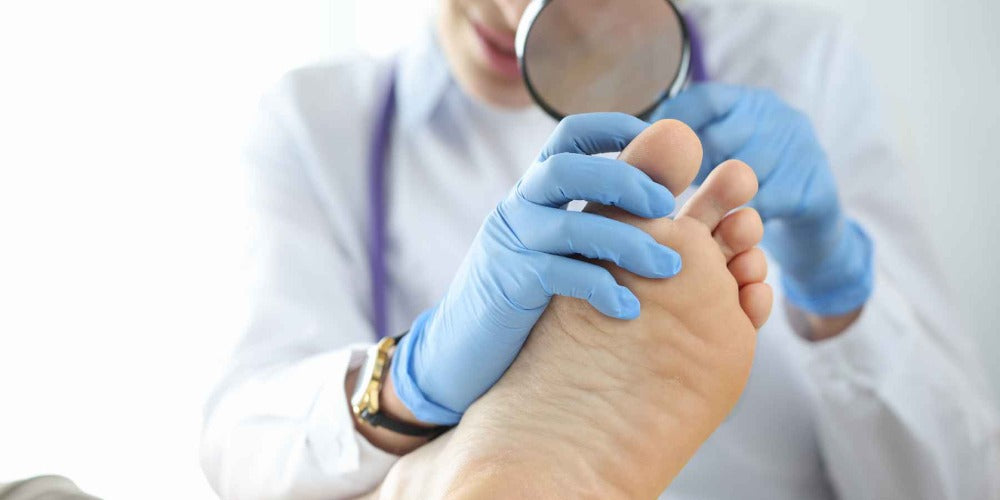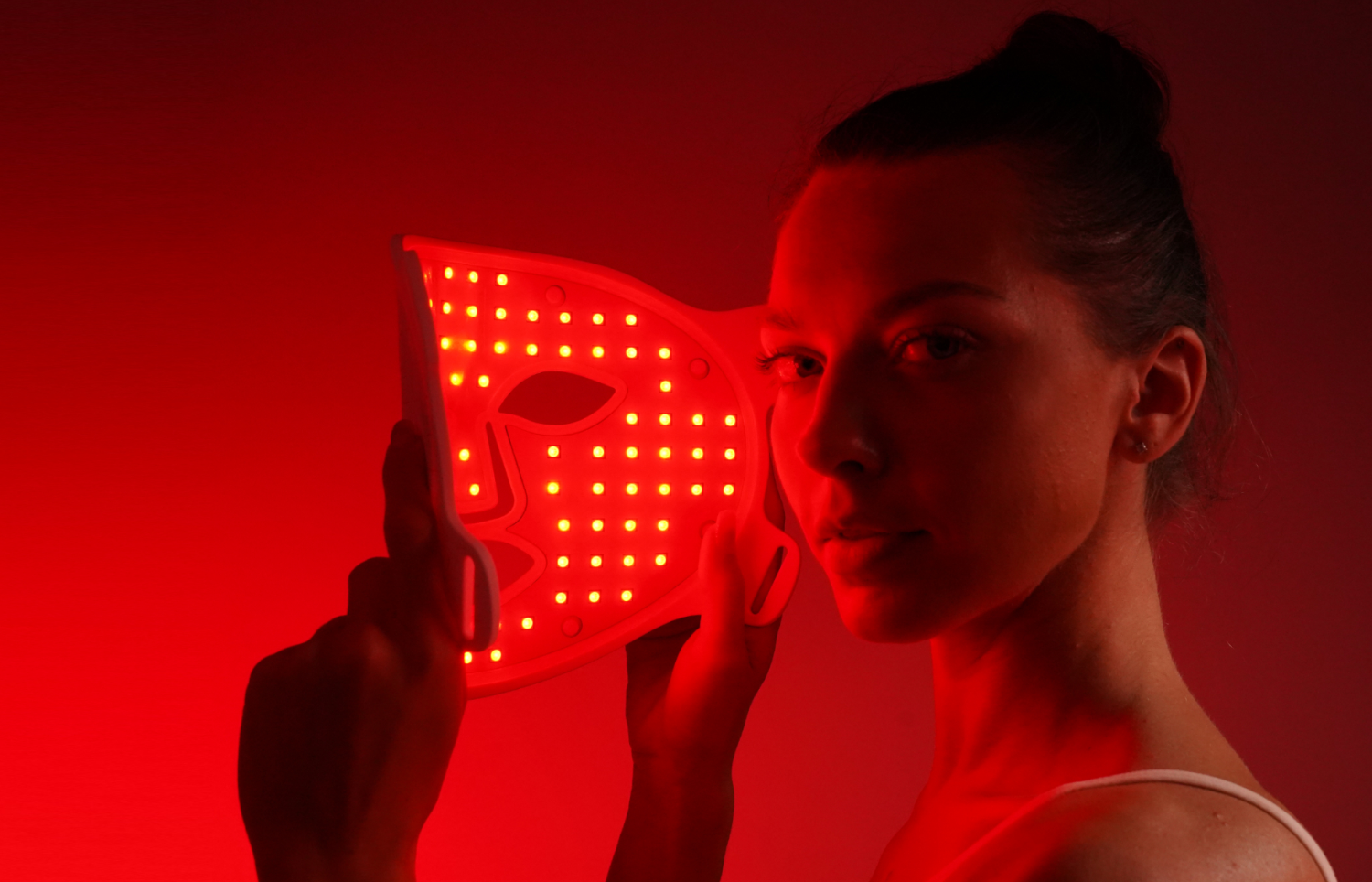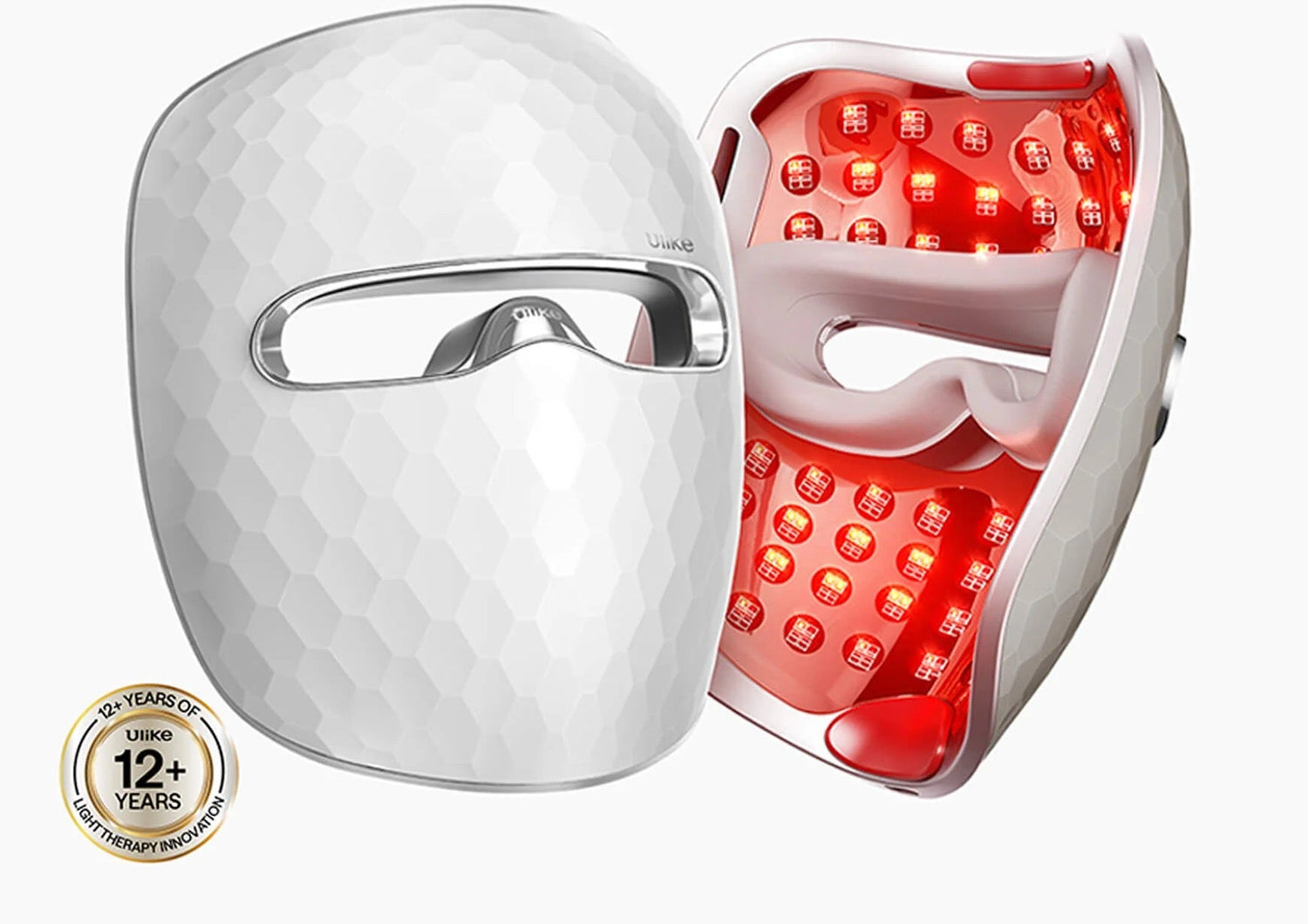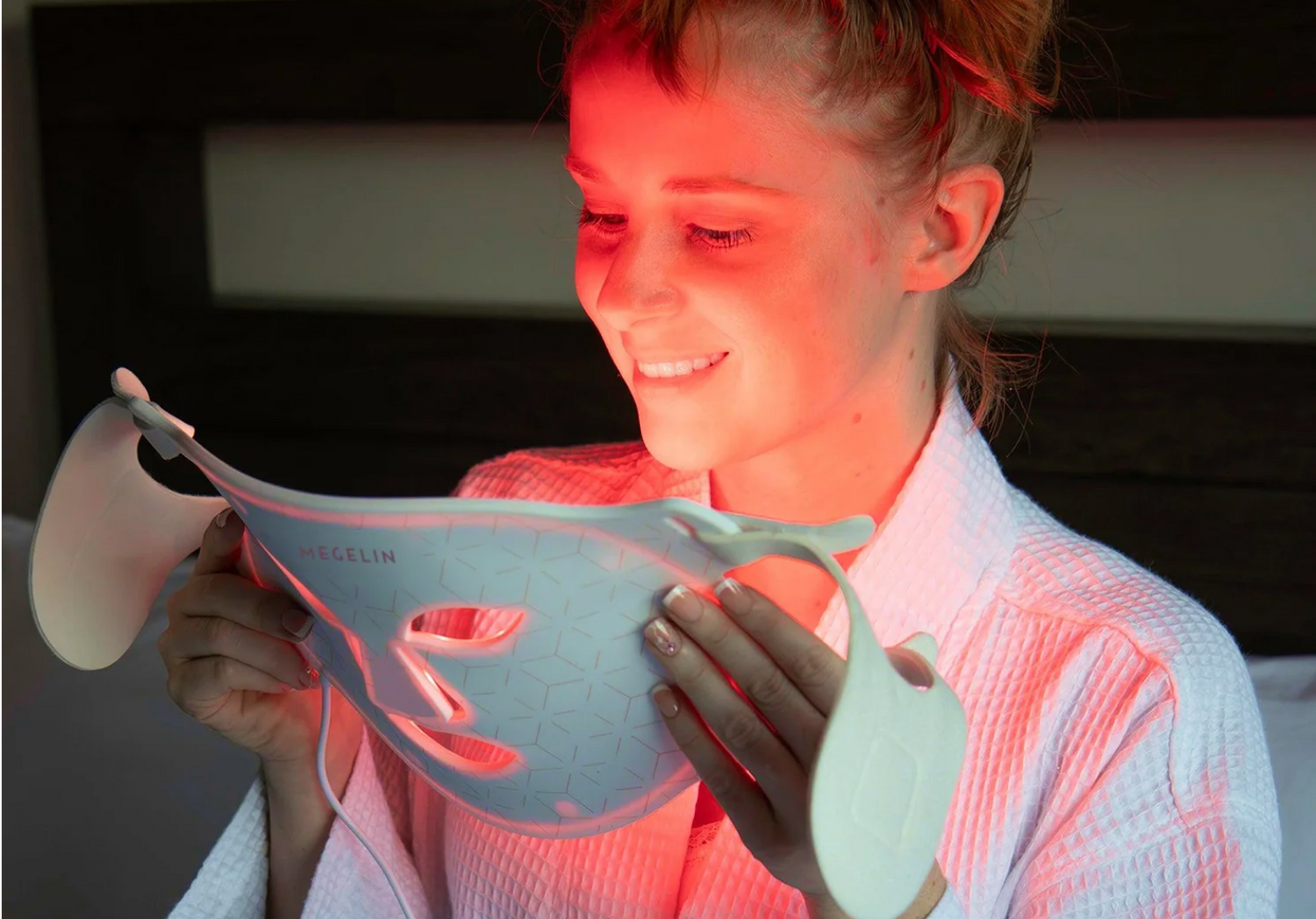
How Red Light Therapy Can Treat Nail Fungus: An In-Depth Look
megelinbeautyAre you struggling with persistent nail fungus that seems impervious to traditional treatments? Red light therapy for nail fungus has emerged as a promising alternative, offering hope to those seeking an effective and non-invasive solution. This innovative approach harnesses the power of specific light wavelengths to combat fungal infections, stimulate cellular healing, and promote healthier nail growth.
In this comprehensive guide, we'll explore how red light therapy works against nail fungus, delving into its mechanisms of action and potential benefits. We'll examine the treatment process, discuss its effectiveness when combined with other therapies, and provide insights into prevention strategies. By the end of this article, you'll have a clearer understanding of whether red light therapy might be the key to overcoming your stubborn nail fungus and restoring your nails to their former health and beauty.
Understanding Nail Fungus and Its Causes
Nail fungus, medically known as onychomycosis, is a common dermatological condition that can affect both fingernails and toenails. It occurs when microscopic fungi invade the nail, causing various symptoms and potential complications [1]. This infection typically begins as a small white or yellow spot under the nail tip and can progress deeper, leading to more severe symptoms [1].
Types of Nail Fungus
There are several types of nail fungus, each with distinct characteristics:
- Distal or lateral subungual onychomycosis: The most common type, affecting both fingernails and toenails. It starts in the nail bed, causing yellowing and separation from the nail bed [2].
- White superficial onychomycosis: This type primarily affects toenails, creating white spots on the nail surface that can become powdery and cause the nail to crumble [2].
- Proximal subungual onychomycosis: Less common, it begins as white spots at the base of the nail and moves outward as the nail grows [2].
- Candidal onychomycosis: Caused by yeast, this type usually affects fingernails and can cause the nail to separate from the nail bed entirely [2].
Risk Factors
Several factors can increase the risk of developing a fungal nail infection:
- Age: The risk increases with age, being most common in older adults and rare in children under 6 [3].
- Environmental conditions: Living in hot, humid climates or frequently having wet hands or feet [3].
- Health conditions: Diabetes, psoriasis, poor circulation, and weakened immune systems can increase susceptibility [3].
- Lifestyle factors: Walking barefoot in public areas, wearing tight-fitting shoes, or having frequent nail injuries [3].
- Obesity: Studies have shown a higher incidence of onychomycosis in obese individuals [4].
Symptoms
The symptoms of nail fungus can vary but often include:
- Thickened nails
- Discoloration (often yellow or white)
- Brittle or crumbly nails
- Distorted nail shape
- Foul odor coming from the infected nail [5]
It's important to note that these symptoms can also be caused by other conditions, such as psoriasis or bacterial infections [1]. Therefore, proper diagnosis by a healthcare professional is crucial for effective treatment.
How Red Light Therapy Works Against Nail Fungus
Mechanism of Action
Red light therapy, also known as photodynamic therapy (PDT), employs a combination of light-sensitive compounds (photosensitizers) and specific wavelengths of visible light to combat nail fungus [6]. The process involves the use of a photosensitizer (PS), such as methylene blue (MB) or 5-aminolevulinic acid (ALA), along with a red light source and oxygen [6].
When the PS absorbs light energy, it reacts with oxygen molecules to generate reactive oxygen species (ROS) [6]. These ROS selectively target and damage fungal cells through two primary mechanisms:
- Type I reaction: The PS interacts with the substrate, producing free radicals that react with oxygen to form ROS, leading to fungal cell apoptosis [6].
- Type II reaction: Energy transfers directly from the PS to oxygen, creating singlet oxygen, a potent ROS that initiates cell injury [6].
The ROS produced by PDT cause oxidative damage to fungal cellular structures, DNA, and plasma membranes, while also inhibiting enzymatic systems [6]. This process effectively destroys the fungal biofilm and cell wall structure [6].
Benefits Over Traditional Treatments
Red light therapy offers several advantages compared to conventional antifungal treatments:
- Non-invasive approach: Unlike oral medications, red light therapy doesn't pose risks of systemic side effects [7].
- Enhanced penetration: Certain photosensitizers, like MB, demonstrate superior nail penetration compared to traditional topical treatments [6].
- Dual action: Red light therapy not only destroys fungal cells but also stimulates the body's natural defense mechanisms [7].
- Improved circulation: Red light acts as a vasodilator, increasing blood flow to the affected area and facilitating the delivery of immune cells [7].
- Cellular energy boost: The therapy promotes ATP synthesis, providing skin cells with more energy to protect against pathogens [7].
- Collagen and keratin production: Red light stimulates fibroblasts, encouraging faster recovery of normal nails and surrounding skin [8].
- Inflammation reduction: By decreasing chronic inflammation, red light therapy helps reduce oxidative stress in cells, enhancing their ability to fight pathogens [8].
The Red Light Therapy Treatment Process
Recommended Wavelengths
Red light therapy for nail fungus typically employs wavelengths between 600 and 690 nanometers (nm), falling within the red light spectrum [7]. This range has shown effectiveness in combating fungal infections. Some treatments also utilize near-infrared light, with wavelengths extending to 850nm [7]. These specific wavelengths interact with light-sensitive compounds in fungal cells, triggering the production of reactive oxygen species that cause irreversible cellular damage to the fungi [7].
Treatment Duration and Frequency
The average treatment time for red light therapy sessions is typically 10 to 15 minutes per day [7]. However, the exact duration and frequency can vary depending on the severity of the infection and the specific protocol used. Some treatments may require multiple sessions, often spaced 5-6 weeks apart [9]. It's important to note that visible results may take about two months to appear [9].
What to Expect
During a red light therapy session, patients can expect the following:
- Removal of shoes and socks
- Exposure of affected nails to the light-emitting device
- A painless and comfortable experience, with some patients feeling mild warmth [9]
The procedure is non-invasive and typically requires no recovery time, allowing patients to resume normal activities immediately after treatment [9]. For optimal results, it's recommended to treat bare feet, ideally after showering, to maximize the light's effectiveness against treatment-resistant fungi [7]. Some protocols may incorporate photosensitizing agents to enhance the therapy's efficacy [7].
Combining Red Light Therapy with Other Treatments
Red light therapy has shown promise in treating nail fungus, but combining it with other treatments can potentially enhance its effectiveness. This multi-faceted approach aims to tackle the fungal infection from different angles, improving the chances of successful treatment.
Topical Antifungals
Combining red light therapy with topical antifungal medications can provide a synergistic effect. Antifungal preparations applied on and under the nail can improve the appearance of fungal nails, although they may not be sufficient as a standalone cure [10]. Some effective topical products include:
- Efinaconazole (Jublia)
- Tavaborole (Kerydin)
- Ciclopirox (Penlac)
These products require daily applications and may take up to a year to show noticeable improvement. Their cure rate averages around 35% [10]. To enhance their effectiveness, filing down the surface of the nail may enable better penetration into the nail or nail bed.
Lifestyle Changes
In addition to red light therapy and topical treatments, implementing certain lifestyle changes can help manage and prevent nail fungus:
- Moisture control: Keep feet dry and change socks regularly to reduce fungal growth.
- Proper footwear: Wear breathable shoes and avoid walking barefoot in public areas.
- Nail care: Trim nails regularly and avoid sharing nail care tools.
- Healthy diet: Maintain a balanced diet to support overall immune function.
By combining red light therapy with topical antifungals and lifestyle modifications, patients may experience improved outcomes in treating nail fungus. This comprehensive approach addresses the infection from multiple angles, potentially leading to more effective and long-lasting results.
Conclusion
Red light therapy has emerged as a promising approach to tackle nail fungus, offering a non-invasive alternative to traditional treatments. Its ability to destroy fungal cells, boost cellular energy, and stimulate the body's natural defenses makes it a compelling option for those struggling with persistent infections. When combined with topical antifungals and lifestyle changes, this therapy has the potential to significantly improve outcomes for patients dealing with stubborn nail fungus.
As research in this field continues to grow, red light therapy may well become a go-to treatment to combat nail fungus. Its ease of use, lack of systemic side effects, and potential to enhance the effectiveness of other treatments make it an attractive option for both patients and healthcare providers. While more studies are needed to fully understand its long-term effects, the current evidence suggests that red light therapy could be a game-changer in the fight against nail fungus.
FAQs
Can red light therapy eliminate toenail fungus?
Yes, red light therapy has shown promising results in treating toenail fungus. It can be even more effective when combined with infrared sauna treatments, significantly improving the condition of toenail fungus.
What color of LED light is effective in killing fungus?
Blue LED light is known to be lethal to bacteria and various types of fungi. The effectiveness of blue light in killing microbes depends on the purity and energy level of the light, as well as the specific type of microbe being targeted.
What treatments are available for severe nail fungus?
For deep nail fungus, healthcare providers often prescribe antifungal creams such as efinaconazole (Jublia) and tavaborole (Kerydin). These creams are more effective when applied to thinned nails after soaking.
Which type of light therapy is most effective for treating toenail fungus?
The Lunula Laser, a non-thermal cold laser device made by Erchonia, is highly recommended for treating toenail fungus. It is favored in clinical settings for its effectiveness.
References
[1] - https://www.premiermedicalhv.com/divisions/services/toenail-fungus/
[2] - https://www.webmd.com/skin-problems-and-treatments/fungal-nail-infections
[3] - https://www.aad.org/public/diseases/a-z/nail-fungus-causes
[4] - https://www.ncbi.nlm.nih.gov/pmc/articles/PMC4689496/
[5] - https://www.healthline.com/health/fungal-nail-infection
[6] - https://www.ncbi.nlm.nih.gov/pmc/articles/PMC9233483/
[7] - https://hoogahealth.com/blogs/news/red-light-therapy-for-nail-fungus
[8] - https://platinumtherapylights.com/blogs/news/nail-fungus
[9] - https://www.medicalnewstoday.com/articles/laser-treatment-for-nail-fungus
[10] - https://www.health.harvard.edu/diseases-and-conditions/staying-one-step-ahead-of-toenail-fungus










